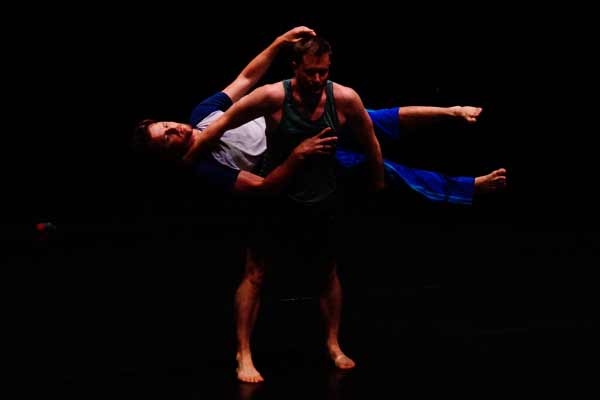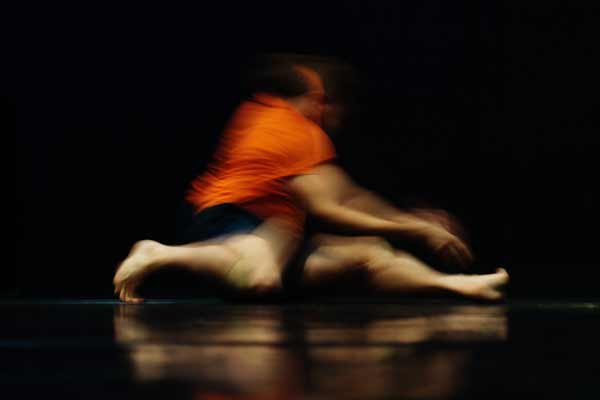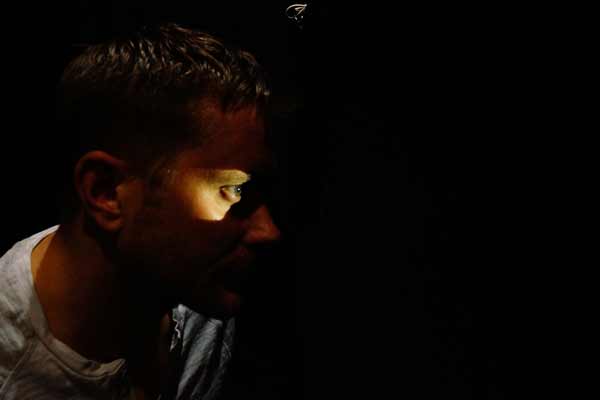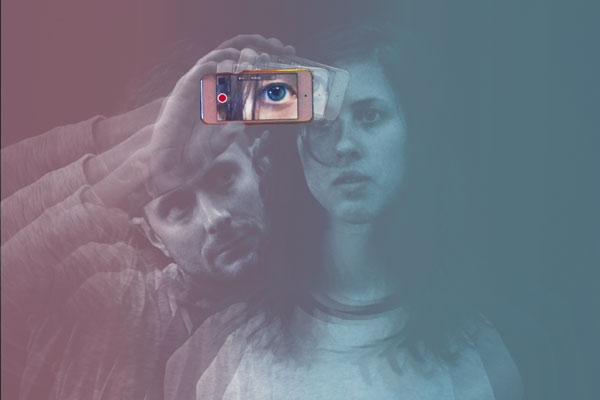When searching for a new project five years ago, composer, director and award-winning sound designer Paul Charlier made an unsettling discovery.
“I had noticed that there was a mini-explosion of apps on the App Store for surveillance,” Paul says, “and this is person-to-person surveillance. Most of them were advertised disguised as baby monitors and anti-burglary surveillance for your house. But the accompanying pictures made it clear that they were for more personal surveillance.”
In his new show ‘Wireless’, Paul fuses dance and mobile surveillance in a spectacle of human movement that explores the fragile conflict between user and technology. “It was clear that people were using their phones to conduct a type of personal surveillance and the thing that was interesting for me was how that personal surveillance mirrors the way we talk about corporate surveillance and state surveillance.”
 'Wireless' is designed to ‘make surveillance audible’ by using common smart devices held by the performers to control the soundscape via their movement, effectively turning the human body into a musical instrument.
'Wireless' is designed to ‘make surveillance audible’ by using common smart devices held by the performers to control the soundscape via their movement, effectively turning the human body into a musical instrument.“There's two ways they can generate music, but what we've been trying to do which is a little bit different for interactive music is the dancers have control over how a pre-existing piece of music unfolds,” Paul says.
“There are some constructed pieces of music I’ve put together and then taken apart, and then the dancer has control over how the music unfolds through their movement. The music comes out slightly different which is what I like, it's more like live performance. The dancers are working as musicians in a way.”
‘Wireless’ takes advantage of motion-sensing and location-tracking technology built in to the devices which Paul says helps to illustrate the true power of smart devices for conducting personal and covert surveillance on a consumer level.
 “We stuck with the idea of using the sensors that everyone has in their smart phone, using primarily off-the-shelf applications to show how much information and how much control you could get out of what's inside your phone, maybe without realising it,” he explains. “We wanted to emphasise that sense of using the technology in the show, rather than using it as a magic trick where you’re not sure how the interaction is happening. We want to make it pretty clear that the technology is more than a prop; it's a character as well.”
“We stuck with the idea of using the sensors that everyone has in their smart phone, using primarily off-the-shelf applications to show how much information and how much control you could get out of what's inside your phone, maybe without realising it,” he explains. “We wanted to emphasise that sense of using the technology in the show, rather than using it as a magic trick where you’re not sure how the interaction is happening. We want to make it pretty clear that the technology is more than a prop; it's a character as well.”Paul says the issues of surveillance and privacy explored in ‘Wireless’ reflect a rising social concern about our reliance on technology and the extent to which it exposes us to the outside world without our knowledge.
“The devices the dancers are using are things everyone has in their pocket and that everyone has a relationship to,” he says. “This is not a special device we've made for this show; we could take the phone out of your pocket and do this to demonstrate the power and how much insight someone can get of you from your phone.”
 The show has been developed over a five-year period which has seen not only leaps forward in smart device technology, but also real-world instances of their powerful capabilities.
The show has been developed over a five-year period which has seen not only leaps forward in smart device technology, but also real-world instances of their powerful capabilities.“The Edward Snowden revelations came out when we were halfway through the project,” Paul says, “so what we were looking at on a personal level was actually happening on a pretty massive scale as well. A lot of people don’t understand the potential of what they’ve got in their pocket.”






